The Two Towers (Italian: Le due torri), both of them leaning, are the symbol of Bologna, Italy, and the most prominent of the Towers of Bologna. They are located at the intersection of the roads that lead to the five gates of the old ring wall (mura dei torresotti). The taller one is called the Asinelli while the smaller but more leaning tower is called the Garisenda. Their names derive from the families which are traditionally credited with having constructed the towers between 1109 and 1119.
Their construction was a competition between the two families to show which was the more powerful family. However, the scarcity of documents from this early period makes this uncertain. The name of the Asinelli family, for example, is documented for the first time actually only in 1185, almost 70 years after the presumed construction of the tower which is attributed to them.
The Leaning Towers of Bologna: History
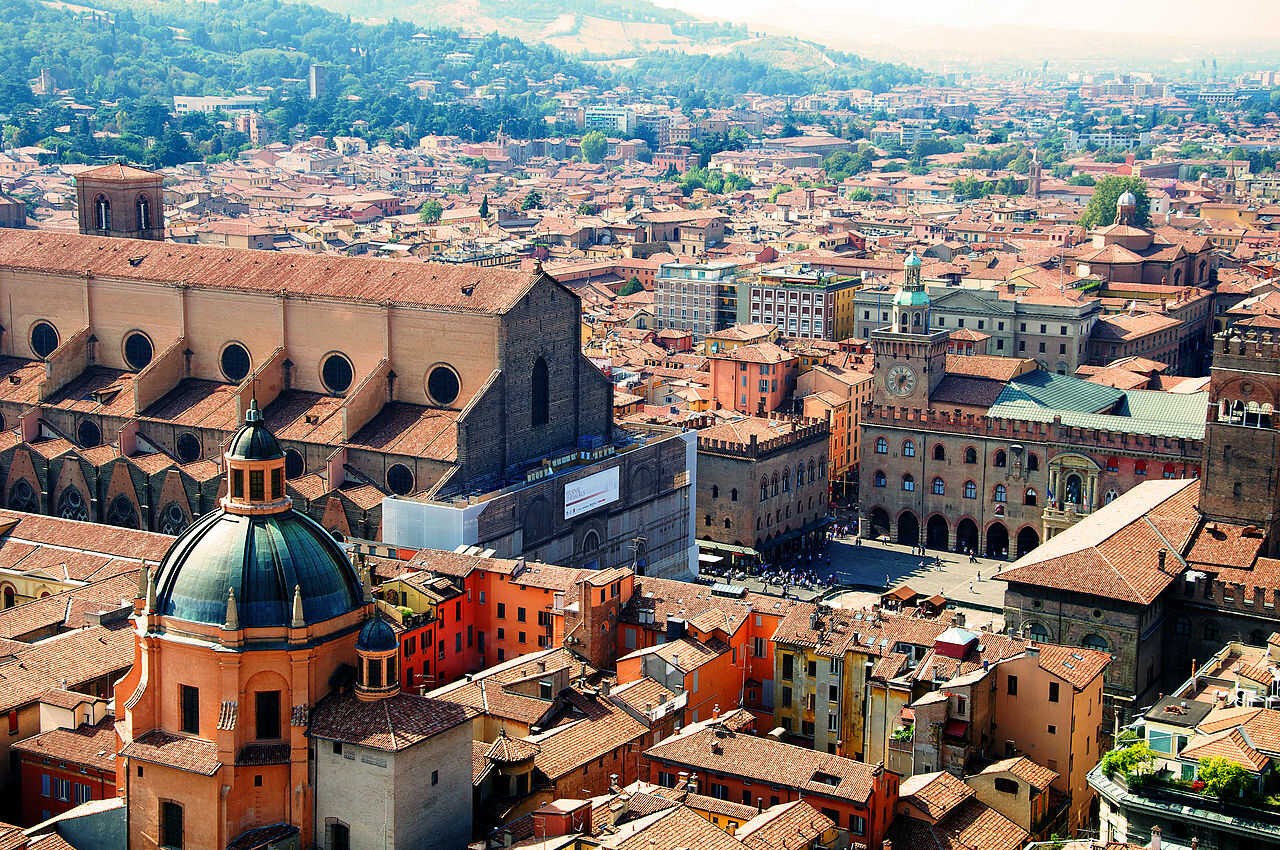 |
| Photo: Wikimedia Commons |
Standing alongside the Asinelli, the city’s tallest (97m), the Garisenda forms the so-called Due Torri (Two Towers), possibly Bologna’s most famous landmarks – also, a popular meeting point for the Bolognesi: ci vediamo sotto le Due Torri, let’s meet under the Two Towers, you’ll often hear them say.
Both the Asinelli and the Garisenda take their names from the families who ordered their construction in the 12th century, when Bologna had more than 100 towers, built both as a display of wealth and power and as defense and attacks posts, at a time when the city was divided between two opposing factions, the Guelphs and the Ghibellines, those who supported the Pope and those who favored the Holy Roman Emperor respectively.
The Two Towers were strategically positioned at what was the entrance into the city from the ancient Via Emilia and were probably visible from a long distance to those coming from the south.
The status symbol for a knight
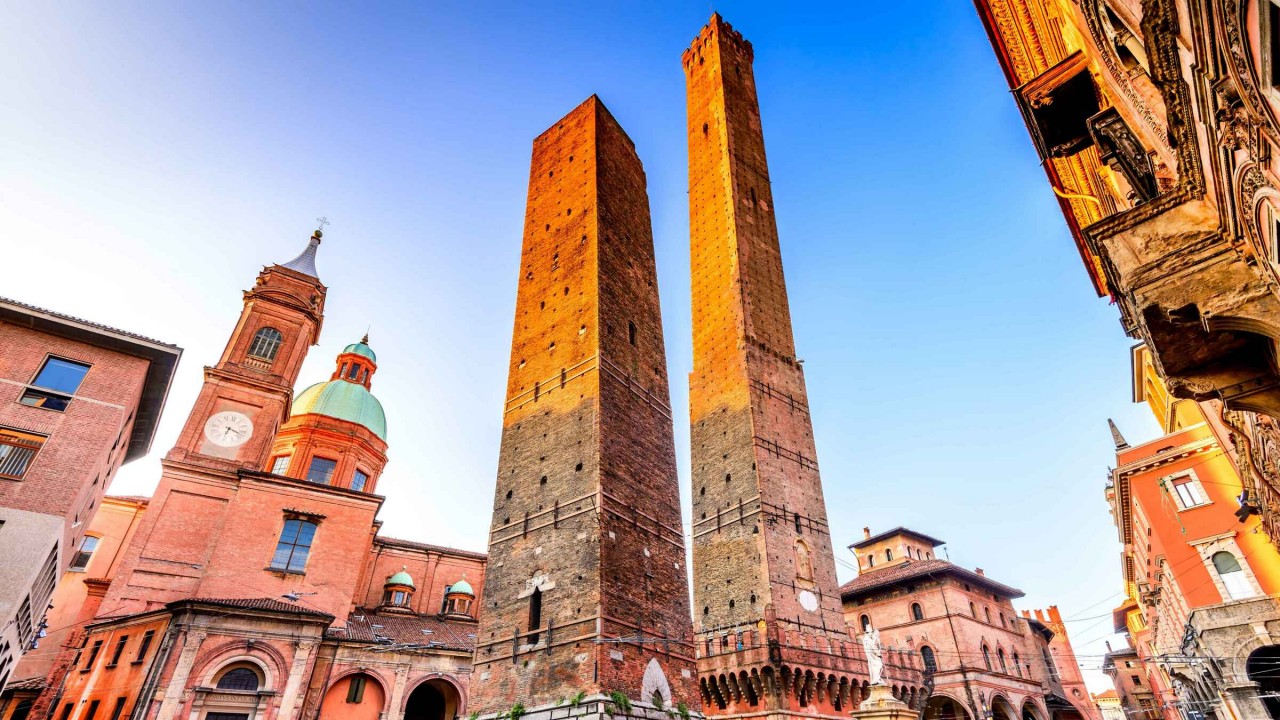 |
| Photo: GetYourGuide |
The towers of Bologna were built in the 12th and 13th centuries and are named after the families who financed them. Building these towers was a costly project and construction could take up to 10 years. The fact that the ‘Due Torri’ differ by 50 metres in height could mean that the Garisenda family was less affluent than the Asinelli family. At any rate, the Garisendas did not invest enough in a solid foundation, and the tower, originally 60 metres in height, has sunk considerably over the centuries and leans about 3 metres towards the south. Part of the unstable tower was removed back in 1360 for fear it would collapse. The Tower of Asinelli was built between 1109 and 1119, probably commissioned by the noble knight Gherardo Asinelli, who lived next to the tower. Craftsmen now sell their handicrafts at the bottom of the tower, which was originally a stronghold to house the soldiers of the watch.
The Asinelli tower
The Asinelli tower stands in the city center and is always watching the other of the Bolognese citizens. Its height is 97.20 meters and is characterized by a slope of 1.3 degrees. This makes it the tallest leaning tower in Italy, this is just one of the Primacies of Bologna.
The origin of the tower of the Asinelli is uncertain and there are several legends about it, but it seems to have been built by the will of Matilde of Canossa. The only sure thing is that after nine hundred years after its construction is still in place in spite of earthquakes, lightning, fire, and even cannonballs.
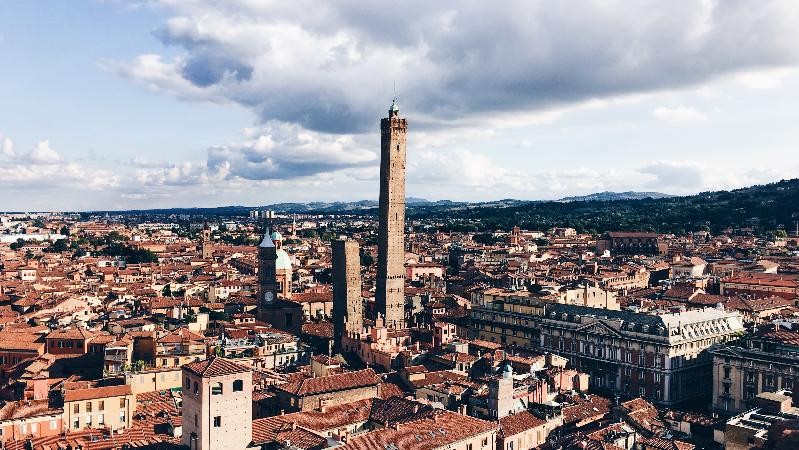 |
| Photo: Bologna Welcome |
According to the locals, the Tower of Asinelli was not actually built by Gherardo Asinelli. A much more romantic legend tells of a young man who one day sees a beautiful girl as he is transporting bags of gravel by donkey (‘asinelli’ is Italian for ‘little donkeys’). Smitten, he asks her father, a rich nobleman, for her hand. The father bursts out laughing and says: “Only if you build the highest tower in all Bologna!” Shortly after that, the young man finds a wealth of golden coins which he uses to finance the construction of the tallest tower in the city. The Tower of Asinelli is then used as the dowry for his marriage to the girl, and it continues to be a long-standing symbol of all-conquering love.
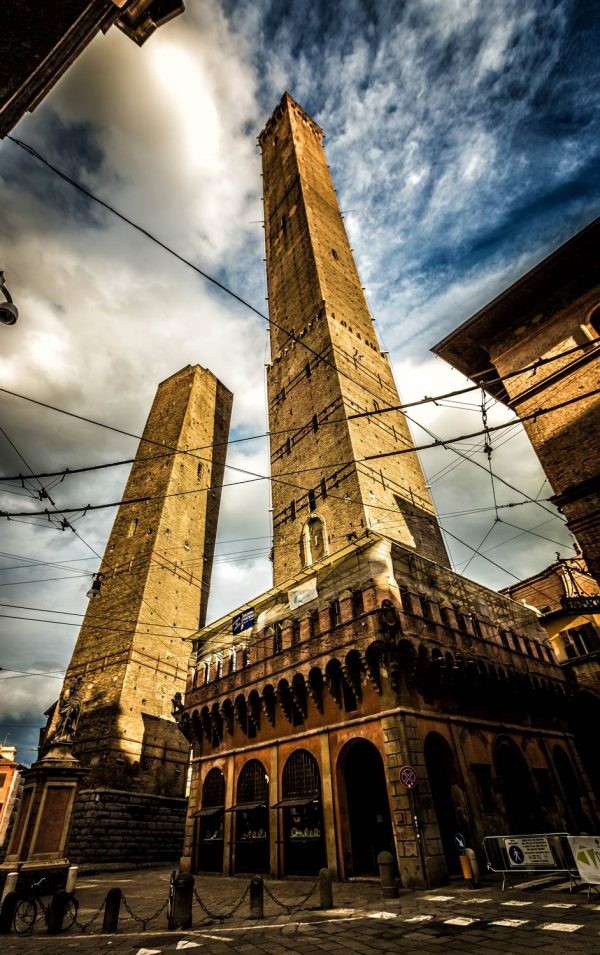 |
| Photo: Bologna Guide |
Despite some cannonballs thrown by mistake the Bolognesi really loves the tower of the Asinelli. It even influenced the cusine, in fact, it was used as a paragon for the preparation of the Tagliatelle. To make the real Tagliatelle Bolognese is not enough to work the pasta by hand but you have to remember that the thickness of the Tagliatelle is 8 cm, the 12270 part of the height of the tower.
The Asinelli Tower was used by the scientists Giovanni Battista Riccioli (in 1640) and Giovanni Battista Guglielmini (in the following century) for experiments to study the motion of heavy bodies and the earth rotation. In World War II, between 1943 and 1945, it was used as a sight post: During bombing attacks, four volunteers took post at the top to direct rescue operations to places hit by Allied bombs. Later, an RAI television relay was installed on top. Architect Minoru Yamasaki is thought to have been inspired by the Towers when designing the World Trade Center during the 1960s.
Garisenda Tower
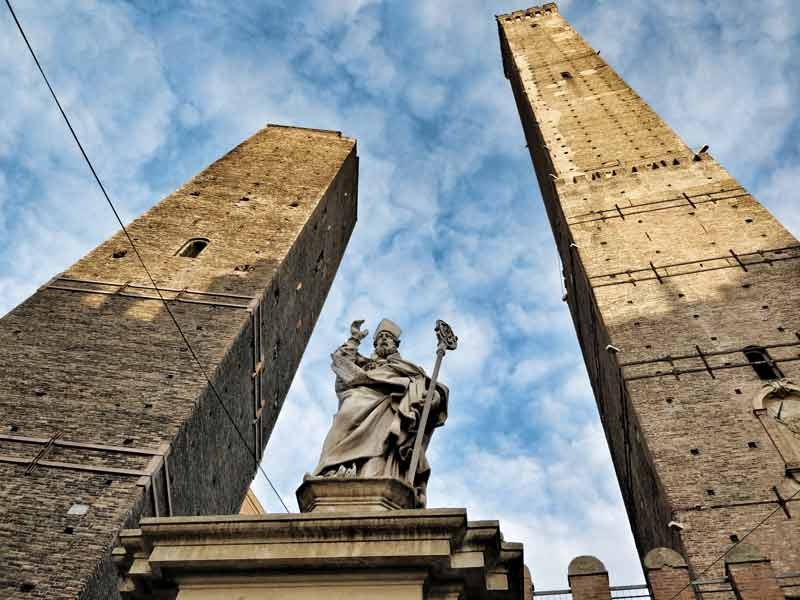 |
| Photo: Bologna Guide |
The Garisenda Tower is currently 48 meters tall. It was originally 60 meters tall but was lowered in the 14th century when its slant became dangerous. The Garisenda Tower was cited in Dante’s Divine Comedy and The Rime. Dickens featured the towers in his book Pictures from Italy.
The Garisenda was even mentioned in the Divine Comedy by Dante, who probably saw it when he was studying at the University of Bologna; he compared it to the giant Antaeus bending over him and Virgilius in the XXXI canto of the Inferno:
“As when one sees the tower called Garisenda
from underneath its leaning side, and then a cloud
passes over and it seems to lean the more,
thus did Antaeus seem to my fixed gaze
as I watched him bend…”
Here he also refers to an odd phenomenon which can still be observed today when you stand at the foot of the tower: if a cloud approaches the tower from its leaning side, it looks as if the tower, not the cloud, is moving, tilting even more as if to meet the cloud.
The Garisenda Tower cannot be visited inside, according to Italy Magazine.



